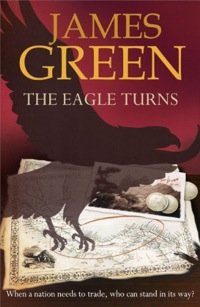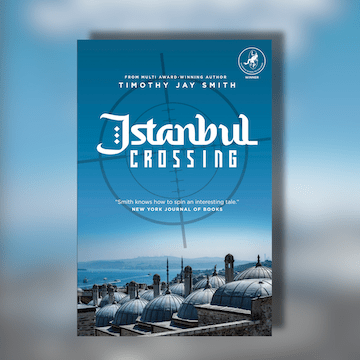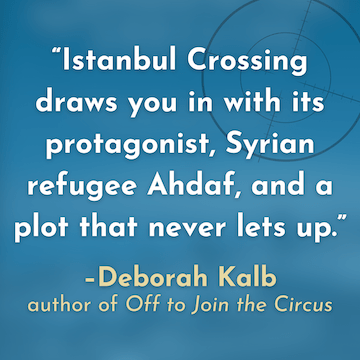
In my mind there are two types of spies: those who know everything and those who know nothing. Jean-François Mercier in Alan Furst’s The Spies of Warsaw is an example of the former, as is John le Carré’s George Smiley, while examples of the latter feature heavily in the works of Eric Ambler. The first group are the puppet masters. The second are the puppets. Without a doubt the espionage agent in James Green’s The Eagle Turns sits beside the puppets. He is a young, naïve journalist, and he is used by government interests to further their own causes. Despite the novel’s rather unique setting – 1850s America – it is in many ways a traditional spy novel.
The government is pushing for war, on its own terms, and young reporter Matthew O’Hanlon is dragged into the fray. After all, journalists make great spies. Elements in the South are seeking secession on the issue of slavery – something that both parties know could lead to civil war. Meanwhile the gold rush in California means that everyone wants a piece of the West, and the White House is pushing to expand US territory to California and Oregon, and also south through Mexico and Central America.
O’Hanlon is the son of Irish immigrants living in the slums of lower Manhattan. A year after lying his way into a job at the New York Herald, he receives word that president Zachary Taylor is dead. The editor quickly sees that a crime has been committed, that the president has been murdered, and sets his team working through the night on an issue that will be the talk of the town when it hits the streets. The only problem is that it never does. In the morning the editor comes into the office and tells the newspaper staff that they will toe the line – the President died of natural causes and was not, as they were alleging, poisoned.
Full of conviction and without understanding the consequences, O’Hanlon tells his boss that this is poppycock, and subsequently finds himself without a job, in a city where no newspaper will hire him. After spending his last pay cheque trying to find another job, he ends up getting an offer from a man staying in the same boarding house – a man known only as some kind of government employee. O’Hanlon is to be sent to Panama City to report on the progress of the railway under construction. It’s an American project to cut across Panama, much as the canal does today, with a railway line. The aim is to aid the transport of goods from the East Coast to West prior to the building of a transcontinental railway line in the US.
O’Hanlon is sent to keep an eye out for a would-be land grab by the British – a crime he neither understands nor knows how to detect. While crossing the Panama isthmus O’Hanlon himself an attempt is made on his life. It’s a position he has to grow used to, for it becomes more and more obvious that he is the victim of a scheme, as well as being the spy sent to investigate one.
In Panama City, O’Hanlon finds that his work is nowhere near as easy as he thought. He is certain he’s not being told everything, but without any idea what to do or who to trust, the best he can do is as he’s told. Despite certainty that all is not right, the ending still manages to include one or two surprises, including the eventual unveiling of his puppetmaster.
From the beginning it’s obvious that something more is going on, and it’s a little frustrating that O’Hanlon himself doesn’t realise how he’s being played. As the novel progresses it becomes obvious that there’s much more going on, yet O’Hanlon remains annoyingly oblivious. While this is frustrating it is for the most part believable; O’Hanlon is young and has only ever left lower Manhattan to travel by ferry across the East River to Brooklyn. He was hired for his naïveté, he was hired to be a puppet, and in the end he serves that purpose quite well.
Perhaps the most interesting part of the novel is the afterword, which gives historical context to the rest of the book. It’s a must-read for anyone with even a passing interest in history, and includes information about the shipping and railway routes through Central America, and mid-19th century American expansionism.
Accent Press
Print/Kindle/iBook
£1.83
CFL Rating: 3 Stars









